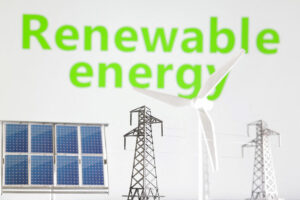Around P2-T worth of projects seeking green lane certification
AROUND P2-trillion worth of projects, mostly in renewable energy (RE), are seeking expedited processing through the One-Stop Action Center for Strategic Investments (OSACSI), a Board of Investments (BoI) official said. BoI Investment Assistance Service and OSACSI Director Ernesto C. Delos Reyes, Jr. said there are around P2-trillion projects in the pipeline that will apply for […]

AROUND P2-trillion worth of projects, mostly in renewable energy (RE), are seeking expedited processing through the One-Stop Action Center for Strategic Investments (OSACSI), a Board of Investments (BoI) official said.
BoI Investment Assistance Service and OSACSI Director Ernesto C. Delos Reyes, Jr. said there are around P2-trillion projects in the pipeline that will apply for green lane processing.
“I think there are over 90 projects, and most of them are in renewable energy. Some will be applying before yearend, but some of them said that they are going to apply next year,” he told reporters on the sidelines of a renewable energy forum organized by the Economic Journalists Association of the Philippines and Aboitiz Power Corp. on Friday.
The government has established “green lanes” in all government agencies to speed up the approval and registration process for priority or strategic investments.
Mr. Delos Reyes said the center is now focusing on streamlining the processes. He said a joint memorandum circular (JMC) on simultaneous processing of permits among 38 government agency members of the Investment Facilitation Network is expected to be released this year.
Currently on its final draft, the circular aims to avoid delays in permitting and licensing that impede construction and commercial operations of strategic projects.
As of September, the BoI has endorsed P4.3-trillion worth of investments for 158 projects to the OSACSI. Of the total, 128 projects worth P3.91 trillion are in renewable energy.
Investments in RE projects increased after the government allowed full foreign ownership in the sector, which was previously capped at 40%.
Mr. Delos Reyes said that the BoI is working on increasing the number of investments in manufacturing.
Only two manufacturing projects worth P29.61 billion were given green lane status.
“Most of the projects are in RE. So, we are working on getting more manufacturing projects. Although RE will support those manufacturing projects,” he said.
A Thai firm involved in manufacturing fiber cement is set to be endorsed for green lane treatment this week, Mr. Delos Reyes said.
“They will manufacture their product here, and that will generate jobs,” he said. “And they will be a pioneer for that product.”
However, Mr. Delos Reyes said the OSACSI will need more manpower to deal with increasing interest in green lanes.
“We are short in manpower. And although it is written under the executive order that we can add more people, we will need more budget,” he said.
“That is why the Strategic Investment Priority Plan board and the BoI limited the activities that can apply for green lanes,” he added.
Green lane treatment can be given for strategic investments in clean energy sources, green metals, electronics, defense-related projects, aerospace, electric vehicles, pharmaceuticals, liquefied natural gas storage, public-private partnerships and infrastructure projects, specialty hospitals, water treatment, new products, and other new technologies.
Mr. Delos Reyes said they are now looking at putting a threshold amount on the investments that can secure green lane services.
He said that the initial plan is to align the threshold with the Department of Energy’s National Significance Project.
“I think their threshold is P3 billion… because there are some small projects that are applying for green lanes,” he said.
Having a threshold will allow the agency to focus on strategic investments, he added.
“But this still needs to be approved by the BoI board,” Mr. Delos Reyes said.
FAST LANE
Meanwhile, the Securities and Exchange Commission (SEC) is eyeing to introduce a fast lane for the securities registration of power generation companies by next year to entice more investments in the energy sector, an official said.
SEC Commissioner Javey Paul D. Francisco said the initiative, called Securing and Expanding Capital for PowerGen Operators and Wholesale Electricity and Retail Services (SEC Powers), simplifies the registration of securities for power generation companies and distribution utilities.
“SEC Powers is a sort of a fast lane where we will prioritize registration of investments in the energy sector. We plan to launch that early next year,” Mr. Francisco told reporters on the sidelines of a renewable energy forum on Friday.
“Under the guidelines, the SEC Markets and Securities Regulation Department shall complete the review of the registration statement of power generation companies and distribution utilities within 45 days from filing, in accordance with the requirements of the Securities Regulation Code; the Revised Corporation Code of the Philippines; and pertinent issuances of the SEC,” he added.
Mr. Francisco said the guidelines are in line with Republic Act No. 9136, or the Electric Power Industry Reform Act of 2001 (EPIRA), which directs power generation companies and distribution utilities to offer and sell at least 15% of their shares to the public.
He noted SEC Powers is provided for under SEC Memorandum Circular No. 4.
“We will be officially launching these guidelines soon, together with our counterparts from the Energy Regulatory Commission, to further promote the initiative to covered companies,” Mr. Francisco said.
“The fast lane will have a dedicated staff to look into the registration instead of passing through the regular process. The general concept that we have is to make it easier to comply and to make the processing faster,” he added.
According to Mr. Francisco, the guidelines will also waive the 20% minimum public float requirement for listed companies in favor of the 15% minimum requirement under EPIRA.
“The simplified procedure is expected to enhance the inflow of private capital and broaden the ownership base of the power generation, transmission and distribution sectors, as provided under the EPIRA,” Mr. Francisco said.
“Access to capital and fostering investment flows are crucial in allowing companies to expand and transition to more renewable power sources. This will allow companies to reach and provide electricity to more far-flung areas in the Philippines,” he added.
Renewable energy currently comprises 22% of the country’s power generation mix. The government is aiming for renewable energy to contribute 35% by 2030 and 50% by 2040 under the Philippine Energy Plan 2023-2050.
The Energy department expects more than 4,000 megawatts (MW) of power projects to come online this year, including 2,000 MW from conventional plants and 2,000 MW from renewables. — Justine Irish D. Tabile and Revin Mikhael D. Ochave












